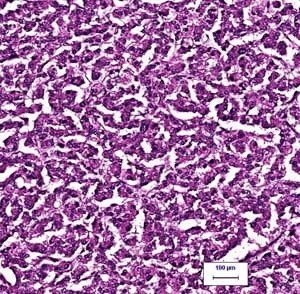 For decades, scientists have been trying to identify the molecules that activate beta cell growth in the fight against diabetes. Once these molecules are identified, scientists could develop therapeutics that target them. One research team, funded by the Juvenile Diabetes Research Fund in collaboration with pharmaceutical manufacturer Hoffman-La Roche, recently made significant headway in this area of diabetes research by discovering a protein responsible for beta cell growth as well as a compound that activates it. The team’s findings were published in the journal Cell Metabolism.
For decades, scientists have been trying to identify the molecules that activate beta cell growth in the fight against diabetes. Once these molecules are identified, scientists could develop therapeutics that target them. One research team, funded by the Juvenile Diabetes Research Fund in collaboration with pharmaceutical manufacturer Hoffman-La Roche, recently made significant headway in this area of diabetes research by discovering a protein responsible for beta cell growth as well as a compound that activates it. The team’s findings were published in the journal Cell Metabolism.
The research team was led by Markus Stoffel, M.D., Ph.D., professor at the Swiss Federal Institute of Technology in Zurich, Switzerland a recipient of the Juvenile Diabetes Research Fund’s Gerold & Kayla Grodsky Basic Research Scientist Award. The team is hopeful that its findings will prove to be significant progress in the effort to develop new therapeutics that can be used to regenerate beta cells.
The team’s findings build on research that they conducted five years ago. In that previous research, Dr. Stoffel’s team discovered that a protein known as Tmem27 is found on the surface membranes of beta cells — the insulin-producing cells located in the islets of Langerhans in the pancreas. They found that higher concentrations of Tmem27 on beta cells were linked to increased mass of the islets of Langerhans in mice. Additionally, they discovered that cleaving Tmem27 leaves it totally inactive.
“We hypothesized that if we could prevent Tmem27 from being cleaved and increase the levels of this protein, we could get more beta cell growth,” said Dr. Stoffel. “This observation gave us the rationale to look for what was inactivating Tmem27.”
Once Dr. Stoffel’s team discovered that cleaving Tmem27 de-activated it, they set about searching for molecules that could be responsible for the process. They zeroed in on Bace2, an enzyme protein that can also be found on the surface membrane (or plasma membrane) of beta cells. To confirm their theories, the team analyzed mice and found that those with lower levels of Bace2 had larger islets and a greater number of beta cells in the pancreas through the process of cell regeneration, or proliferation. The mice with lowered levels of Bace2 were also more efficient at removing glucose from the bloodstream than were the mice that had Bace2.
The team’s next goal was to demonstrate the growth of beta cells by inhibiting Bace2. They worked with the scientists of therapeutic company Hoffman-La Roche, who developed an inhibiting compound that prevented Bace2 activity. When the mice were given the compound, their Bace2 was inhibited and their beta cells began to regenerate. Additionally, it was discovered that Bace1, a chemically similar compound to Bace2, does not cleave the Tmem27 protein. Bace1 may be linked to a variety of other diseases, including Alzheimer’s disease and Down syndrome, but since it does not cleave Tmem27, the door is open for anti-diabetes therapeutics that inhibit Bace2 specifically. Research to develop inhibitors for Bace1 is already underway by several companies.
In addition to the identification of a possible target for anti-diabetes therapeutics, the research that Dr. Stoffel’s team conducted may also pave the way for the development of new tests to determine the presence of Tmem27 fragments in the bloodstream, which could be used as a measure of the number of beta cells present in the pancreas.